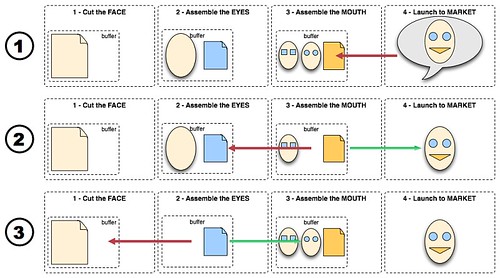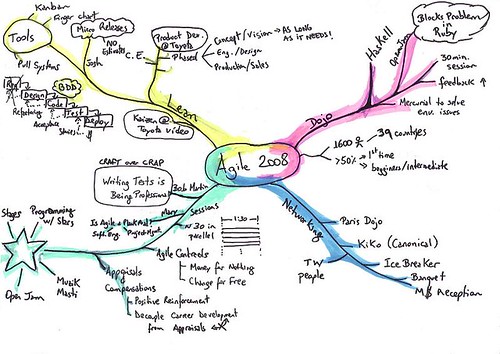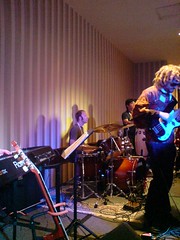I attended this session on Friday morning. This time the subject was another Lean tool: kanban. Corey Ladas showed 3 different project scenarios and presented different approaches to implement a kanban system.
He started by talking about some important Lean concepts like one-piece flow, work-in-process (WIP), cycle time, and their relationship using a Cumulative Flow Diagram (or finger chart). He showed how a constraint in the system can cause disruptions to flow and cause more harm than benefit to downstream processes by building more and more inventory (WIP). He then went on to explain the benefits of using a kanban system to limit the amount of WIP in the different scenarios.
The first scenario was a traditional waterfall-style process. He used a value stream map to identify the amount of value-producing time in each phase of the process, and used that to calculate an initial buffer size for each kanban lane. Instead of trying to explain the whole idea here, I suggest you to read Corey’s series of 4 posts on the subject.
The second scenario was a transition from a Scrum process into using a structured kanban instead of a traditional story/task board. Again, the approach is explained in more detail in a post about what he called Scrum-ban.
The third scenario would be an improvement over an existing kanban process, but due the number of questions throughout the presentation (which generated some quite interesting discussions) he didn’t have enough time to go into more detail.
My overall impression of the session was that he did a good job explaining kanban as a tool, and the reasoning behind it to limit WIP and control the flow of your process. The discussions and questions were also very interesting, which demonstrated the audience was interested in the subject. The thing that I didn’t like so much was his argument in favor of having specialists in the team, and how to move into using kanban without too much change along the way. I think one of the fundamental Lean principles is kaizen, or continuous improvement, and it encourages the team to constantly search for better alternatives. Change is part of the process and should be seen as a Good Thing. And I have already shared some of my impressions about Generalist vs. Specialists, so I’m a bit biased :-)
An important thing to keep in mind is that kanban is just one of the tools in our Lean toolkit. I particularly like Kenji Hiranabe’s InfoQ article on the subject, where he explains kanban in a more broad context, acting as a balancing tool between reducing WIP and one-piece flow, as well as a way to visualize kaizen. Lean is full of contradictions, and you must understand the underlying principles to be able to apply (and change) the practices to a particular situation. Using kanban per-se shouldn’t be a goal for any agile team, but it is very important to understand how it works and the reasoning behind it. If you haven’t looked into kanban yet, you should definitely check out the references in this post.







 Twitter
Twitter LinkedIn
LinkedIn Facebook
Facebook Flickr
Flickr